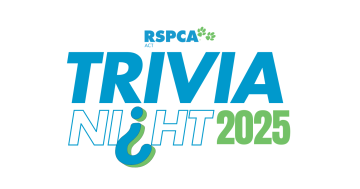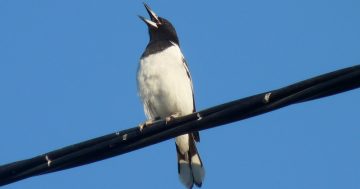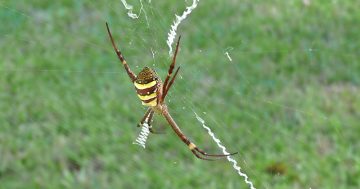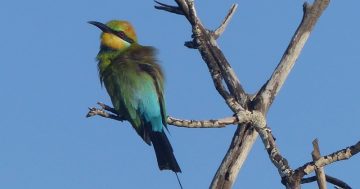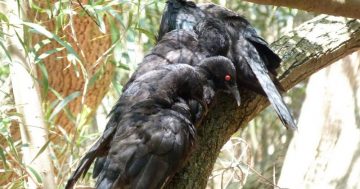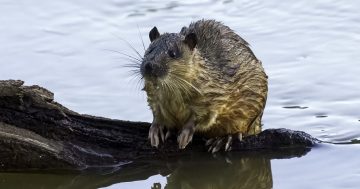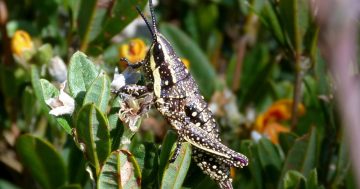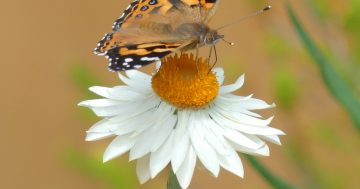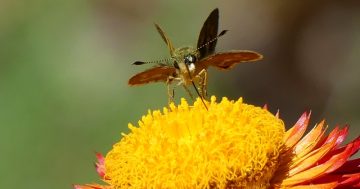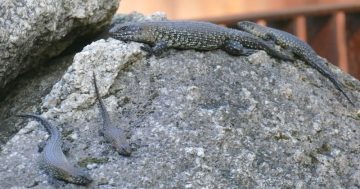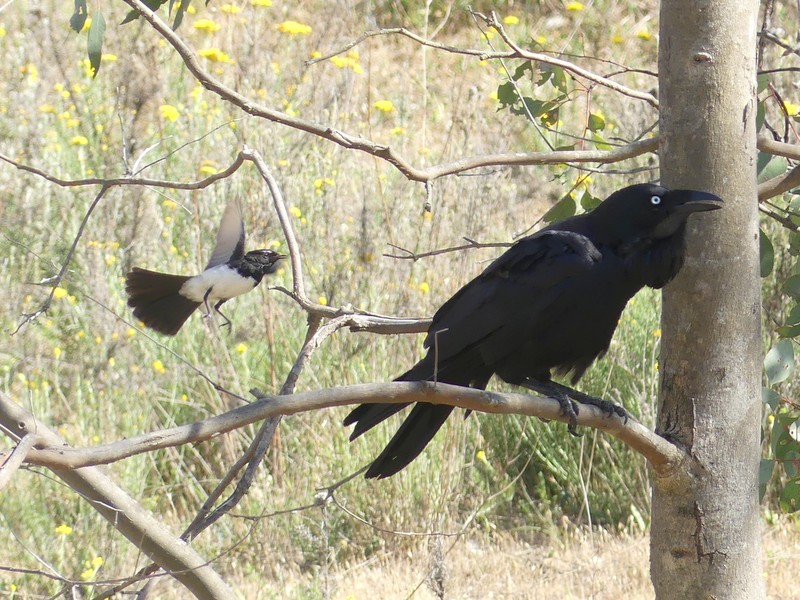
Willie Wagtails are fearless in attacking much bigger and more dangerous birds, including Australian Ravens when their nest is threatened. Photo: Ian Fraser.
I’m going to stick my neck out (nothing new there, though!) and suggest that most Canberrans would be able to recognise a Willie Wagtail.
While they don’t hang around cafés for handouts or scrounge at home feeders, they are quite relaxed around humans and are happy for us to share their space, as long as we behave. And if we don’t, they’ll be quick to let us know, scolding us with harsh chittering rattles and flashing their white eyebrows warningly.
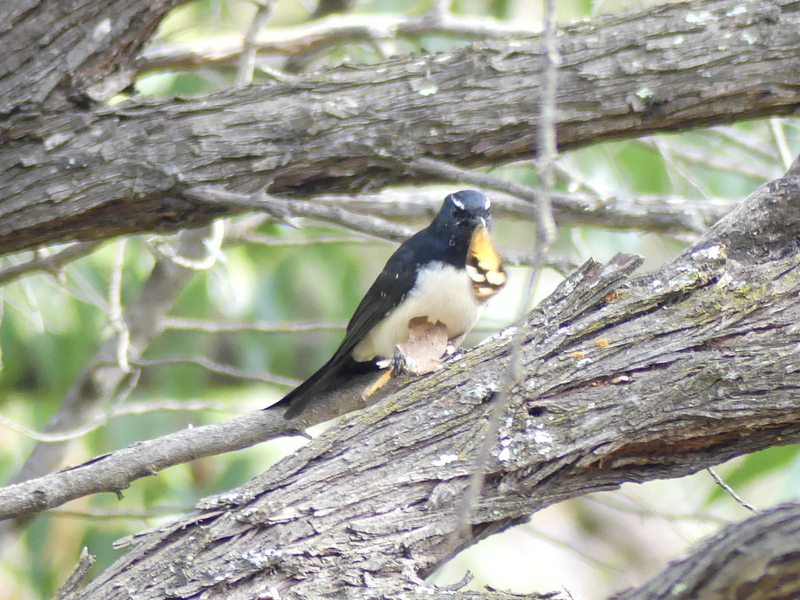
Willie Wagtails catch flying insects such as butterflies, removing the wings before eating the body. This one is showing its eyebrows to warn me off. Photo: Ian Fraser.
They regularly feature as high-rankers in the biennial Australian Bird of the Year poll. However, they have not won gold so far (there is always strong lobbying for certain threatened species in order to raise their public profile, which skews the voting quite markedly).
They are boldly black and white, a colour combination that draws attention and sends the message, “I don’t mind you seeing me because I’m tough and cranky, and it’s not worth messing with me”. Think of magpies, magpie-larks, currawongs and butcherbirds, for instance, and you’ll see the pattern.
Despite their diminutive size, they have no hesitation in taking on ravens, currawongs, kookaburras or even eagles in the vicinity of their nest, and more often than not, a pair of Willies acting together can drive a big predator away.
The nest itself is a beautiful structure, made of grass or bark strips glued together with spider webs, which the Willies sometimes purloin by flying through the web and carrying it off completely, presumably to the despair of the poor spider. They often line it with animal fur or wool and have no qualms about taking it from living mammals. One early writer described how the resident Willies even pulled fur from his cat, which was too slow to catch them.
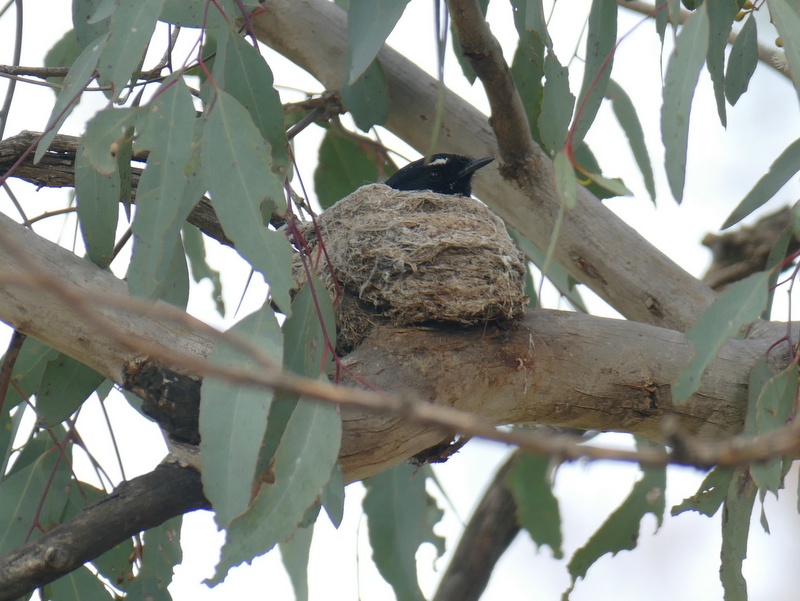
Willie Wagtail nests are beautifully constructed of grass or fine bark glued with spider webs and lined with fur or wool. Photo: Ian Fraser.
They belong to the fantail family of birds, small aerial insect-eaters found from India to Australia whose fanned tails enable them to perform impressive aerobatics while pursuing their flying lunch.
Willies, however, differ from most of their relatives – including all five other Australian fantails – in doing much of their foraging on the ground. While the tail is primarily a rudder, a Willie will also use it to scare insects into revealing themselves by flaring it suddenly as they move across the ground. This results in the ‘tail-wagging’ behaviour that is typical of them and which gives them their name.
They will often hunt by riding larger foraging animals such as kangaroos, wombats or emus and, more recently, domestic stock, and catching insects and spiders that they disturb. A variation of this habit involves picking ticks out of their fur, especially of kangaroos.
The origin of the name has a couple of unexpected twists. It’s based on our habit of bestowing two human names on birds we’re familiar with (‘magpie’ was originally, in Britain, Maggie Pie and ‘robins’, again in Britain, were Robin Redbreasts).
First, the name doesn’t seem to have been used in Australia, at least in writing, until 1882, though it was likely in spoken use before that.
Prior to that, the ‘official’ name was Black Fantailed Flycatcher. However, the Australian National Dictionary tells us that the name Willy-wagtail was previously used in the Isle of Man and Northern Ireland for a similar but unrelated bird (the White Wagtail). It seems too much of a coincidence for the name to have arisen independently in Australia, but we probably won’t know.
Willie has a close relative that is also very common around Canberra, though more likely to be seen in the hill reserves and woodlands than in suburbia.
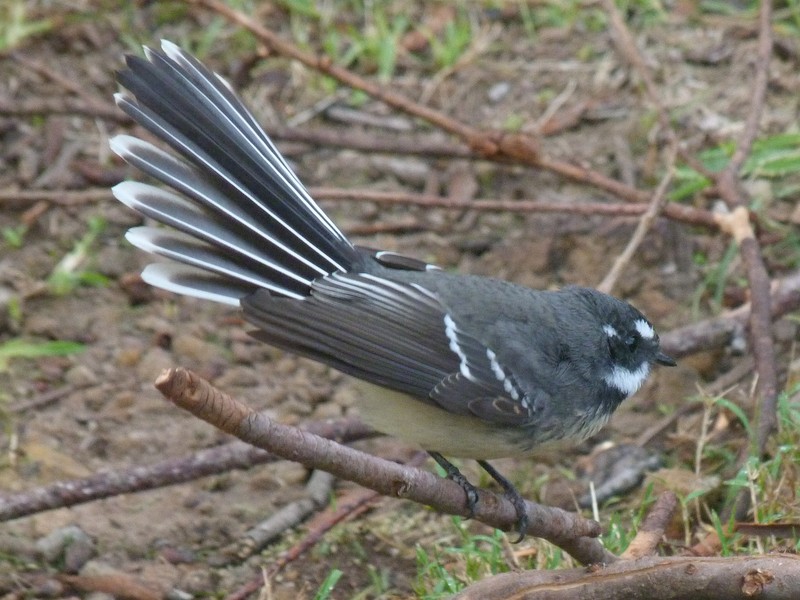
Grey Fantails are smaller relatives of the Willie Wagtail and are common in forests and woodlands around Canberra. This one is showing its fanned tail beautifully. Photo: Ian Fraser.
The Grey Fantail is equally unafraid of people and seemingly quite curious about us.
Indeed, sometimes, when I go out bird-watching, I get the impression that Grey Fantails are deliberately flying between me and the bird I’m watching to attract attention! Yes, I know, I’m really not that important, but that’s how it feels.
More interestingly, when Willies and Grey Fantails are together, the Grey Fan stays higher in the branches, and the Willie even more closely sticks to the ground to avoid competing for food.
One of my boyhood memories from Adelaide is of listening to a sweet little song at night in summer when the moon was full. The Willie’s ‘tich tichy teacher’ song is mostly only heard at night when the moon is lighting up the world, and I used to wonder why I never heard it during the daytime. Actually, sometimes I still do.
I hope you love Willie Wagtails as much as I do.
Ian Fraser is a Canberra naturalist, conservationist and author. He has written on all aspects of natural history, advised the ACT Government on biodiversity and published multiple guides to the region’s flora and fauna.











